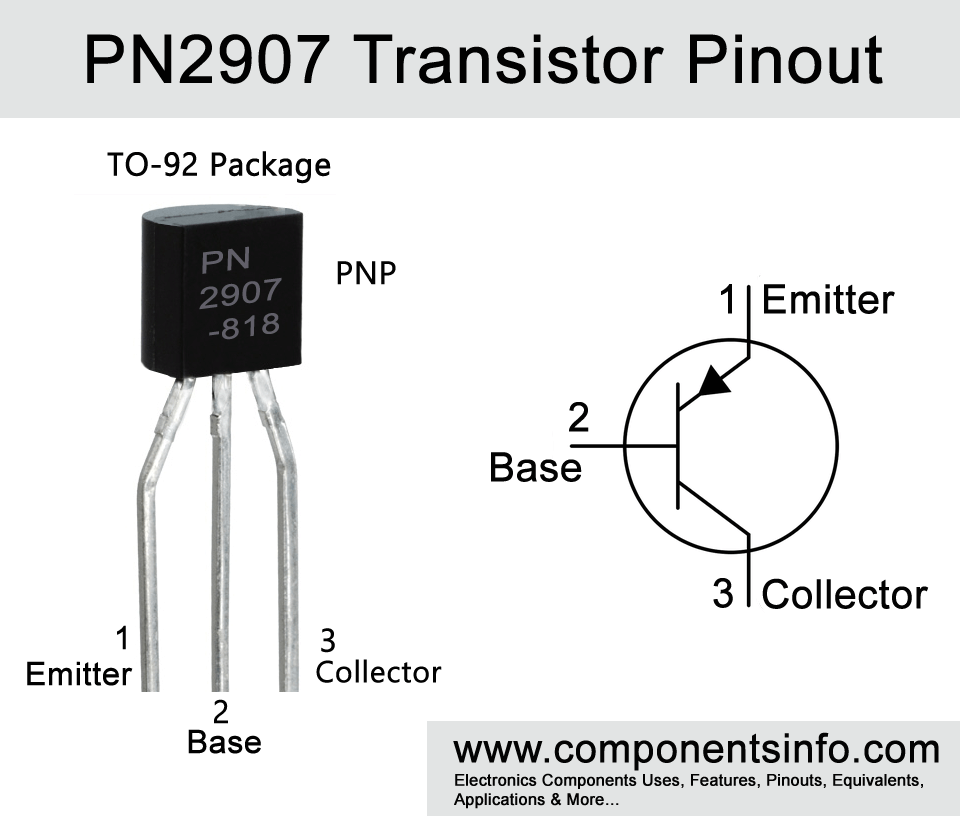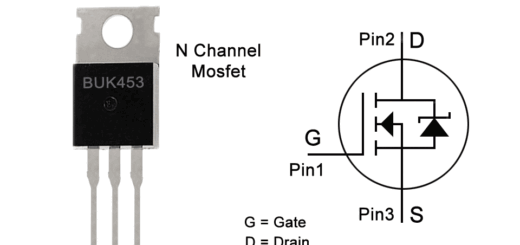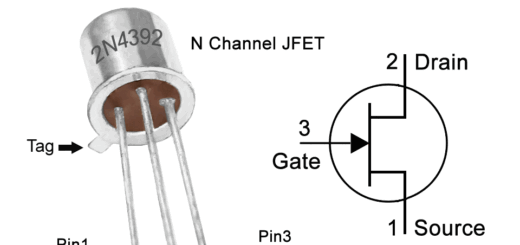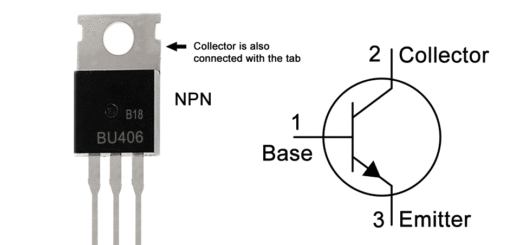PN2907 Pinout, Uses, Features, Equivalents and Other Details
PN2907 is a plastic package PNP transistor available in TO-92, SOT-23 & SOT-223 packages. Today we are going to explain PN2907 pinout, uses, features, equivalents and other details about this transistor.
Features / Technical Specifications:
- Package Type: TO-92, SOT-23 & SOT-223
- Transistor Type: PNP
- Max Collector Current(IC): 800mA
- Max Collector-Emitter Voltage (VCE): 40V
- Max Collector-Base Voltage (VCB): 60V
- Max Emitter-Base Voltage (VBE): 5V
- Max Collector Dissipation (Pc): 625 Milliwatt
- Max Transition Frequency (fT): 200 MHz
- Minimum & Maximum DC Current Gain (hFE): 35 to 300
- Max Storage, Operating & Junction temperature range: -55°C to 150 °C
NPN Complementary:
NPN Complementary of PN2907 is PN2222
Replacement and Equivalent:
PN2907A, 2N2907, 2N2907A, 2N4401, 2N2905, 2N2906, 2N5763
PN2907 Transistor Explained / Description:
PN2907 is a low voltage plastic package PNP transistor available in TO-92, SOT-23, and SOT-223 packages. It is a general purpose transistor and packed with lot of capabilities and features in its small package and can be used in wide variety of applications like switching, amplification, RF etc.
There is a lot of confusion about these transistors among the users for example people sometimes confuse with 2N and PN versions so in this post we also try to explain it in a way that also clears the confusion. PN2907 is a plastic package PNP transistor that is complimentary to PN2222 which is its NPN version. There is also another version which is PN2222A & PN2907A also comes in plastic and are not much different from the PN2222 and PN2907 but there are minor differences which not worth considering. The only two differences which you should have to be aware of are its collector to emitter voltage and collector to emitter breakdown voltage. But if you are using it in a circuit that is using upto 24V then these differences are also not worth considering. So if you are using it up to 24V then you can easily use PN2222 and PN2222A alternatively and 2N2907 and 2N2907A alternatively. On the other hand, you can also use 2N2222/2N2222A (Metal and plastic versions) interchangeably in the place of PN2222/PN2222A and 2N2907/2N2907A interchangeably in the place of PN2907/PN2907A without any hassle in almost all the applications. Because all these transistors are almost similar in their electronic characteristics.
Now coming back to the PN2907 transistor looking at the absolute maximum ratings of the transistor the maximum collector to emitter voltage is -40V, max collector to base voltage is 60V, max emitter to base voltage is 5.0V, max continuous collector current is 800mA and total device dissipation is 625mW.
The transistor also has high switching speed which also makes it ideal to use in circuits where high switching speed is crucial.
Where We Can Use it & How to Use:
The transistor can be used in wide variety of general applications. For example, audio related applications, switching variety of loads under 800mA. Moreover, due to its higher transition frequency, it can also be used in radio and RF applications.
Applications:
Audio Amplification Circuits
Switching applications
RF applications
Audio Preamplification Circuits
Any signal amplification
Audio amplifier stages
Darlington Pairs
Sensor Circuits
Safe Operating Guidelines / Absolute Maximum Ratings:
When using a transistor it is important to check its absolute maximum ratings and always stay below from these ratings. Using any transistor on its absolute maximum ratings can damage it or weak its performance. So it is better to stay atleast 20% below from its absolute maximum ratings, this follow up also ensures long life and stability of a transistor.
So according to the absolute maximum ratings the collector to emitter voltage is -40V and after applying the 20% less rule do not drive load of more than 32V. The maximum continuous collector is 800mA therefore do not drive load of more than 640mA. Moreover do not operate or store in temperatures below -55°C and above 150°C.
Datasheet:
To download the datasheet just copy and paste the below link in your browser.
https://z3d9b7u8.stackpathcdn.com/pdf-down/P/N/2/PN2907_FairchildSemiconductor.pdf



